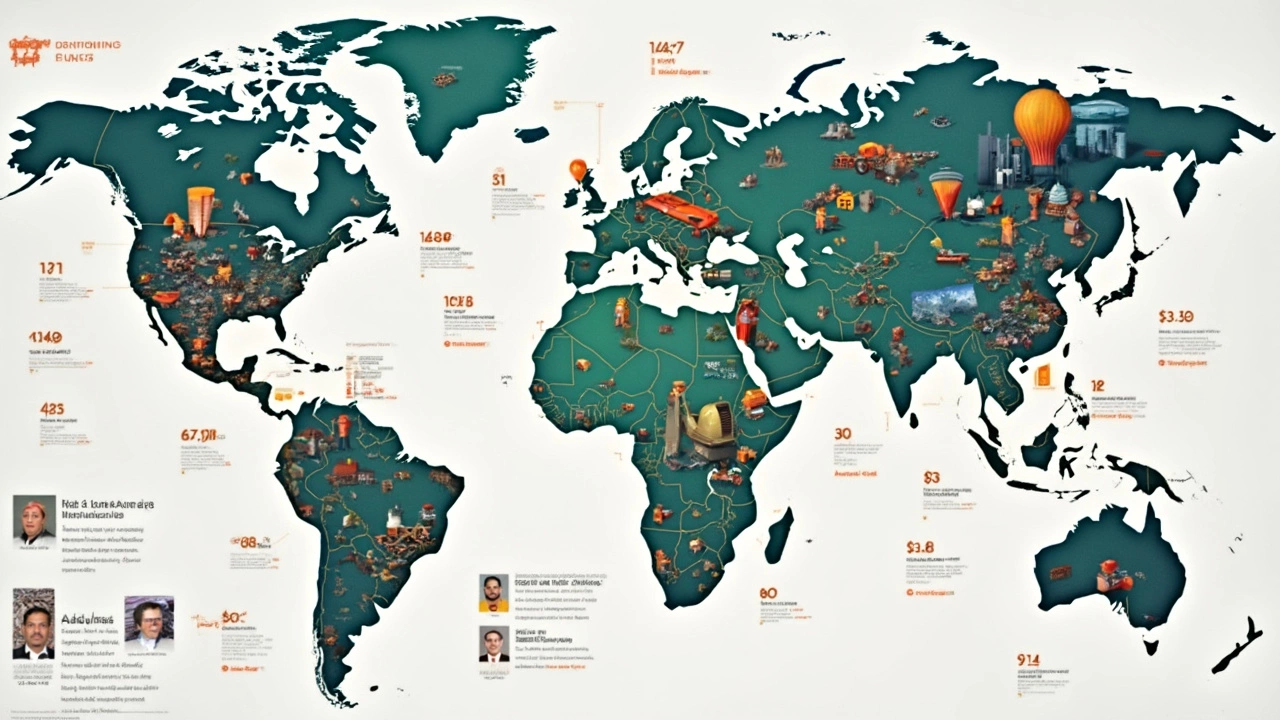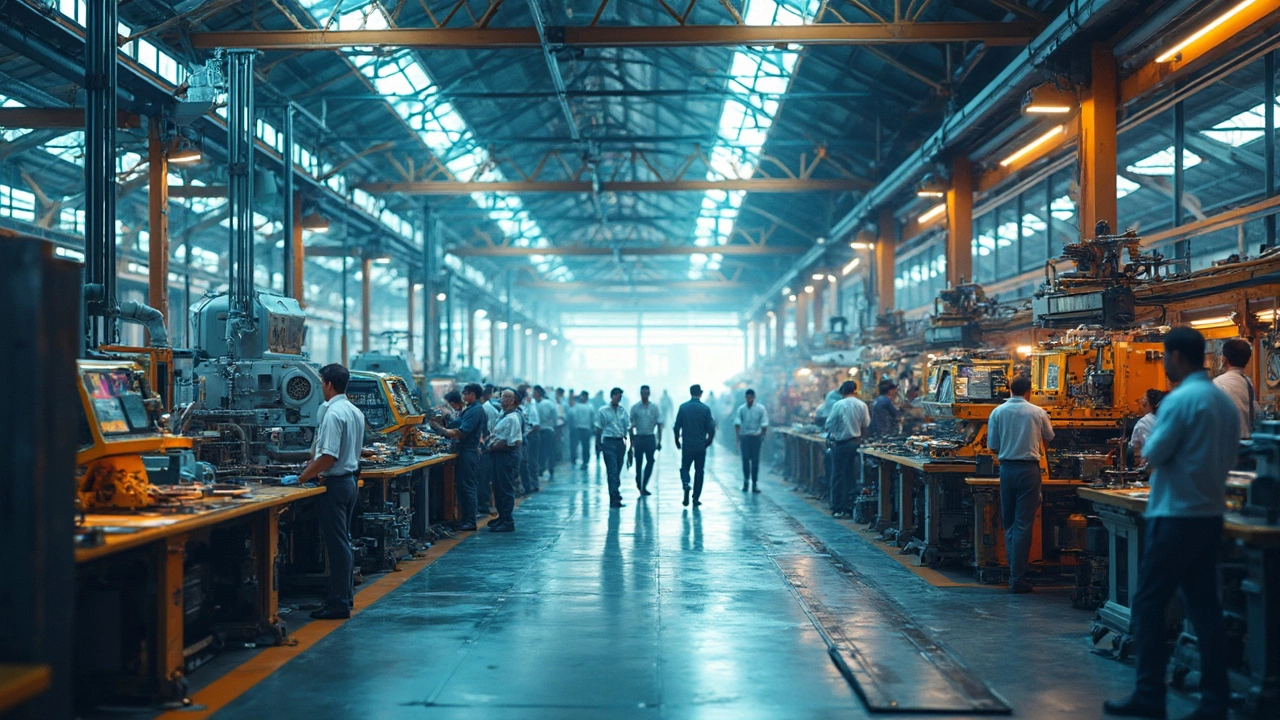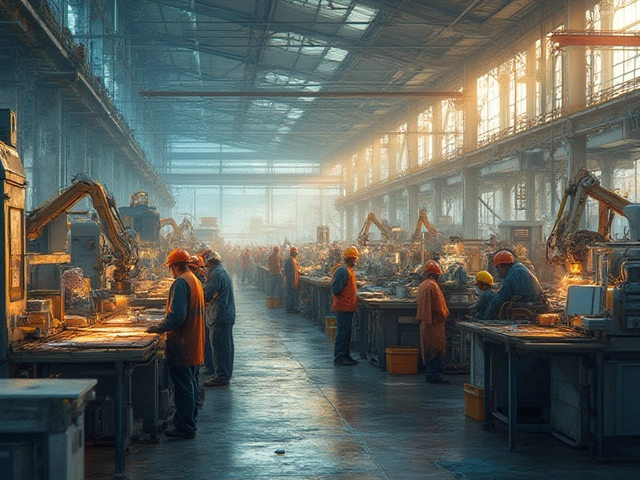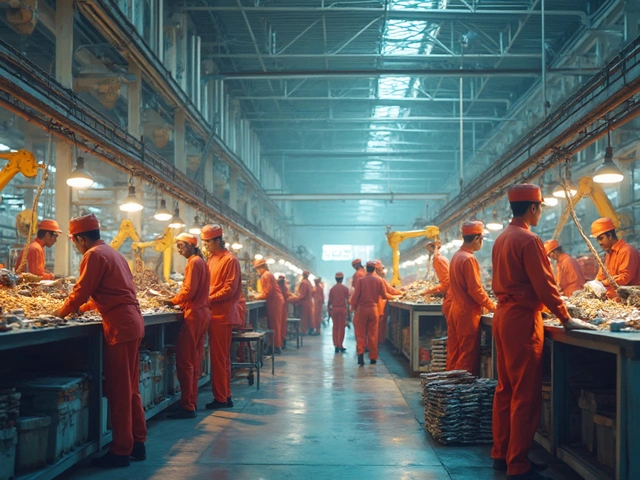When you think of machinery manufacturing, your mind might jump to Europe or maybe the USA, but have you considered India? Over the years, India has been stepping up its game, and it might just surprise you how far they've come. Let me walk you through why India is getting a lot of attention in this field.
First up, there's the sheer size of India's workforce. Imagine a country bursting with engineering talent that's highly skilled yet costs less compared to other places. That's a huge plus for manufacturers looking to balance quality and cost. Plus, the government has been pretty active in promoting the 'Make in India' initiative, pulling in investments and modern technology from global players.
Of course, technology is the heart of machinery manufacturing. India is not just sticking to traditional methods but embracing cutting-edge tech to boost efficiency and innovation. Robotics, AI—you name it, they're working on it. And don't forget, manufacturing isn't just about making stuff but making it smart and sustainable.
- India's Machinery Manufacturing Prowess
- Technological Advancements
- Comparing Global Giants
- Future of Machinery Manufacturing
India's Machinery Manufacturing Prowess
India's reputation in the machinery manufacturing sector is getting stronger by the day, and there's a good reason for that. So, what's fueling this rise? Let's break it down into some key aspects.
Skilled Workforce
India is blessed with a large pool of skilled workforce, especially in the engineering domain. This workforce isn't just capable but also cost-effective, offering companies the chance to produce high-quality machinery at competitive prices.
Government Support
The Indian government has been keen on pushing industrial growth through policies like 'Make in India.' This initiative encourages foreign investments, eases regulations, and boosts technological collaboration. Companies setting up machinery manufacturing in India can benefit from these supportive policies.
Regional Strengths
Different regions in India specialize in specific types of manufacturing. For instance, Tamil Nadu is known for its automotive sector, while Gujarat has a strong base in capital goods. This regional specialization can be leveraged by manufacturers looking to tap into specific industries.
Growing Technology and Investments
Over the years, technology adoption has been on the rise. From advancements in robotics to AI applications, India is not just keeping pace but sometimes leading the charge. International investments have brought in new technologies, helping the country stay ahead of the curve and improve production processes.
Challenges and Opportunities
While India has its strengths, challenges exist too, like infrastructure and bureaucratic hurdles. But, addressing these can open doors for even greater opportunities, both for local entrepreneurs and international collaborators.
Quick Facts
| Aspect | Details |
|---|---|
| Engineering Graduates | Over 1 million per year |
| Industry Growth Rate | Projected at 15% annually |
| Foreign Direct Investment (FDI) | Increased by 20% last year |
India's blend of talent, policy support, and regional strengths makes it an attractive hub for machinery manufacturing. It’s a case worth examining if you're considering international manufacturing hubs.
Technological Advancements
Let's get down to the tech side of things. When it comes to machinery manufacturing, India's making some serious strides. Innovation is happening all over, and it's not just limited to big metropolitan areas. There's a wave spreading across various regions, making the whole country a hub for technological growth in this industry.
Adoption of Automation and AI
Ever heard of factories run by robots? It’s not just sci-fi—it’s becoming a reality in India. Industries are adopting automation at breakneck speed, integrating AI to improve production lines, reduce errors, and speed up processes. Automated processes mean fewer mistakes and improved quality of products.
In fact, several reports suggest that around 60% of India's big manufacturing firms have implemented some form of automation in the last five years. It's a move that's not just improving efficiency but also appealing to international investors.
Investments in R&D
Research and development is another area where India is pulling its weight. Companies are investing heavily in R&D to ensure they’re not just keeping up, but leading. Be it developing more efficient machinery parts or environmentally friendly manufacturing methods, innovation is at the forefront.
Focus on Sustainability
As the world gets more eco-conscious, Indian manufacturers are getting on board with sustainable practices. This means adopting cleaner technologies in machinery production and minimizing waste. For instance, many firms are now using renewable energy sources like solar and wind to power their manufacturing, setting pretty high standards for the rest of the world to follow.
| Year | Firms with Automation | Investment in R&D (Billion USD) |
|---|---|---|
| 2020 | 45% | 10 |
| 2023 | 60% | 15 |
So, next time you're thinking about which country is leading in machinery manufacturing, remember that India is not just catching up—it's racing ahead with some serious technological advancements.

Comparing Global Giants
Let's talk about the big players in the machinery manufacturing world. It's like a heavyweight title match with contenders like the USA, Germany, China, and now India stepping up aggressively.
United States of America
The USA has been a leader in machinery thanks to its advanced technology and innovation. They're known for high-quality, precision manufacturing and investing heavily in R&D. The American machinery manufacturing industry is worth billions, contributing massively to the economy.
Germany
Over in Europe, Germany is synonymous with engineering excellence. Think of their machinery like a well-oiled machine—literally! They're big on precision and have been known for producing machinery that simply lasts. Plus, their vocational training system is top-tier, keeping the skill level high.
China
Now, let’s chat about China. They've been the factory hub of the world, excelling in mass production at competitive prices. While their machinery might not always be known for the same precision as Germany's, they make up for it with sheer volume and scale.
India’s Position
India is making a mark with its focus on machinery manufacturing that blends old-school manufacturing techniques with new-world tech like AI and robotics. They're not just producing; they're innovating at speeds that catch industry eyes.
Here's a quick stat to consider:
| Country | Machinery Export Value ($ Billion) |
|---|---|
| USA | 45 |
| Germany | 56 |
| China | 60 |
| India | 14 |
While India's export numbers might be less for now, they're growing year-on-year, and companies all over are noticing. This could be attributed to competitive pricing and government-backed initiatives that bolster the industry.
Future of Machinery Manufacturing
What’s next for the world of machinery manufacturing? If you’re imagining high-tech factories and robots at every turn, you’re not far off. But dig a little deeper, and there's a whole lot more happening.
Integration of Advanced Technologies
One major shift is the integration of AI and IoT into the manufacturing process. This isn't just about having a robot do the heavy lifting, but about creating smart factories. Imagine a workspace where machines talk to each other, predict breakdowns before they happen, and adjust production schedules in real-time. This kind of tech isn't just futuristic; it's happening now and helping countries like India improve their efficiency and output.
Sustainability in Manufacturing
As the world gets more eco-conscious, machinery manufacturing is also pivoting toward sustainability. New processes that reduce waste or use green energy are being explored everywhere. In India, for example, there’s a push to use renewable resources, so the country's machinery manufacturing keeps pace with environmental goals.
Shifting Global Dynamics
India and other countries are rapidly gaining ground in the industry, challenging traditional power players. Governments worldwide are recognizing the importance of this sector, investing heavily in infrastructure and policies that promote innovation. If trends continue, we might see a shift in who leads the charge on the global stage.
Training and Skill Development
To keep up with tech advancements, countries are also focusing on upskilling their workforce. India, with its massive pool of young engineers eager to learn, is leveraging this by offering specialized training programs. This ensures that the machinery sector has the skilled hands it needs to thrive in the future.
The future of machinery manufacturing looks vivid and dynamic, with innovation and sustainability at its core. For those invested in this industry—whether businesses, governments, or workers—the changes are as exciting as they are promising.











Write a comment